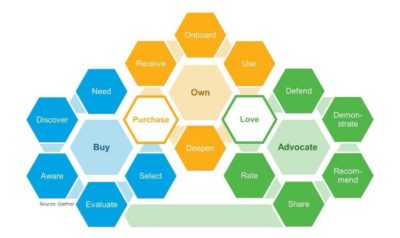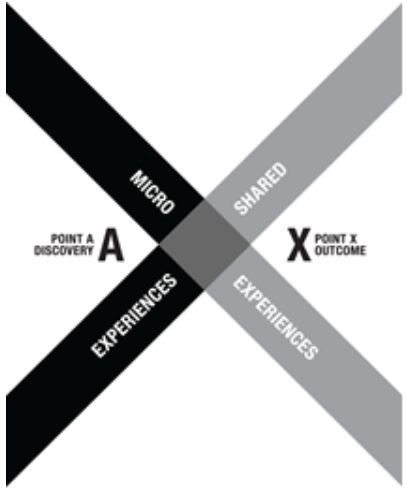2017 is a hard year to define, and the relentless change was a wild ride. As we turn our calendars to a new year, let’s look at a few defining Context Marketing trends that emerged over the past year.
Industry-leading organizations are utilizing Sitecore’s context marketing capabilities to engage customers on a more personal level. It’s essential for marketers to realize that a customer’s experience with a brand doesn’t stop after a transaction occurs. Once a proper analytics foundation and marketing taxonomy are in place, you can begin designing contextual experiences with relevant content in real time based on the aspirations and intentions of your customers. A great place to start is with available customer data.
The powerful xDB cloud data repository provides companies with unprecedented access to a customer’s behavior. Collecting this crucial data can inform your team about who your customers are and what they want. By itself, the aggregated data will not produce much value. Many marketing teams are hiring data scientists to better optimize analytics and data gathering practices. Companies on the leading edge of context marketing are using big data to tell stories. By segmenting users and monitoring the behavior of these segments, you can begin creating more meaningful experiences for customers.
We’re currently in the midst of revolutionary customer transformation. The ways in which customers interact with brands are fundamentally changing, and strategic marketing teams are pivoting to find innovative ways to engage with customers. In a recent Wall Street Journal article, Google’s Sridhar Ramaswamy shared, “69 percent of online consumers agree that the quality, timing, or relevance of a company’s message influence their perception of a brand.” Developing a strong context marketing strategy has become important than ever.
Many large brands are falling behind in rendering contextually relevant information, and customers have started bypassing traditional channels to make purchasing decisions. YouTube has become the world’s second most popular search engine, with more than 3 billion searches every month. Potential customers are searching for richer content while making purchase decisions. Existing customers broadcast their brand experiences with tweets, videos, blog posts, and reviews, building a searchable repository of influential information about products and companies. Analysts have proclaimed for years that the marketing funnel is collapsing beneath the weight of connected customers, and this is a good time to reevaluate the structure of the customer journey.

Customers pass in and out of the typically linear customer journey that brands define. They are using multiple devices, and compliment your brand’s content by researching relevant shared experiences. This new connected customer searches for customer generated tweets, blogs, and videos about your brand. While many companies are hyper-focused on acquisition, they tend to over-optimize for critical touch points related to purchase. This type of narrow focus distorts a customer’s overall journey, and a well defined Engagement Value Scale (EVS) also prioritizes customer retention by nurturing experiences of existing customer segments.
It’s time to fold the linear, traditional customer journey into a more intuitive model. Gartner’s customer journey model (above) is aimed at Marketing Leaders and uses a Buy/Own/Advocate framework. Looking through this type of lens can help close the gap between customer acquisition and motivating customers to broadcast their own experience. It’s clear that most brands fall short of measuring loyalty and advocacy. Strategically improving customer experience is not only good for your customers, but offers potential to create a lasting impact for your brand.
Brian Solis defines another useful model as the “dynamic customer journey” in his book, The End of Business as Usual. Solis extends the customer journey in X as a cyclical flow that incorporates shared experiences and micro-moments. His cycle establishes a blueprint for an experiential ecosystem in which people can discover, explore, thrive, and connect.

Brands use contextually relevant content to move people from Point A (Discovery) to Point X (desired Outcome, like “Loyal Customer”) through a series of “micro-experiences”. On the other side of the equation, you have the “shared experiences” of others who have already embarked on the journey. When these shared experiences intersect with brand promise, they can fuel the micro-experiences you create for customers. Companies can incentivize positive expression by monitoring and rewarding customers for sharing their experiences. This additional component to the customer experience system can be overlaid on top of the customer journey cycle, paving the way for today’s connected customer to connect.
Supporting this new dynamic customer journey may require rethinking your marketing infrastructure. Sitecore offers powerful Experience Analytics and Optimization capabilities, but a strategic foundation is required to pave the way. The Sitecore Business Optimization Services team has some great resources online to help point you in the right direction. Setting up a solid Marketing Taxonomy foundation can help connect your company’s xDB data to your experience strategies. With the right foundation in place, your marketing team can reimagine the paths on which your customer experience plays out. Moving forward, consider incorporating both online and offline data into your strategy. Remember to optimize for triggered goals which drive business value, because most companies architect transactions instead of creative experiences. You can introduce new engagement opportunities by defining these new paths, rules and systems with your connected customers in mind.
